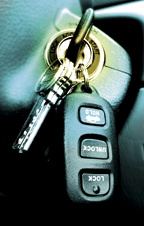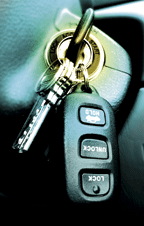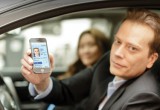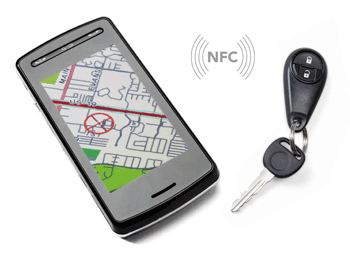Interacting with our automobiles via a RFID, contactless, and NFC technologies
30 November, 2006
category: Contactless, Library, NFC
 How a car looks and performs (and of course, its cost) will still be the major criteria in the auto purchasing decision. But the “coolness” factor may be entering the equation thanks to RFID and Near Field Communication (NFC) technology that’s eliminating the need for a key and offering up other technological wonders.
How a car looks and performs (and of course, its cost) will still be the major criteria in the auto purchasing decision. But the “coolness” factor may be entering the equation thanks to RFID and Near Field Communication (NFC) technology that’s eliminating the need for a key and offering up other technological wonders.
Smart keys have been around since the end of the last century, but with improvements in RFID and the new kid on the block, NFC, more sophisticated technology is making the driving experience, well, more enjoyable.
In the Toyota Avalon, for instance, an on-board sensor recognizes a signal from the smart key, allowing the driver to start the engine by pushing a switch. If he waves the smart key near the trunk, it opens. And, of course, it unlocks the car as the driver approaches. Ditto for the American-produced Corvette and Cadillac XLR.
“In terms of the use of smart keys, Renault, Mercedes, BMW and Rover are also introducing ‘keyless’ cards that identify you as the authorized driver when you’re within range, automatically unlock the door … (then) simply press a button to start the ignition,” said Jack Morgan, senior director of automotive for NXP (formerly Philips Semiconductors). “They also make it possible to ‘lock’ the key itself, immobilize the car if it’s stolen, and prevent you from locking yourself out,” he added.
Cracking the immobilizer code?
Security is also a key concern of car manufacturers, particularly protecting the cars against theft. “The car’s ignition system became more secure with the introduction of the immobilizer concept. It uses transponder RFID technology that requires the key to not only mechanically fit the lock but also that it is the only key programmed to match the vehicle’s electrical system,” added Mr. Morgan.
“It’s relatively easy for a trained thief to make a key that will work. But the thief cannot match the electronic immobilizer code. That technology exists with the key which is why we’re going to remote systems.”
He said the immobilizer started in Europe in the 1980s after the Berlin Wall came down. “All the BMWs were disappearing.” That standard then moved to the U.S. and now all U.S. production vehicles have immobilizer technology installed. NXP, he said, provides it to Chrysler and General Motors.
“That technology evolved into the key fob (and) will now evolve to the credit card-type security system,” said Mr. Morgan.
Enter NFC …
“The auto industry now is in an interesting period with respect to electronics,” he said. “It’s looking at convergence in two areas – in entertainment, where everyone wants it portable and on the go, and the other in data/financial security.”
Helping that convergence are the inroads being made by NFC. Some have even suggested that we may soon use the mobile phone to unlock the car and crank the ignition, similar to how key fobs function today. But Mr. Morgan doesn’t see that happening. The reason is the read distance. NFC has a very short read range. An electronic key card powered by RFID only needs to be carried in a driver’s pocket. As he approaches the car, the vehicle recognizes him as the driver, unlocks the car and he’s ready to go.
“To use NFC, you have to hold it close. That’s not the way people want to do it (in automobiles). They want it in their pocket and when they get near, the car will open and will sit there waiting for you,” he adds.
NFC does have other advantages, however. It can enable keys to interact wirelessly and to deliver/obtain content via other electronic devices securely and wirelessly, said Mr. Morgan.
Your car talks back
With the advance of NFC, “the best use case” is to include it as part of the automobile’s workings, “to put NFC in with the immobilizer function in a vehicle. Now you open up … in a real way … the ability to use your car’s access system” to allow the car to transmit “a lot of data functions that are of interest to the car owner and the car manufacturer,” he added.
For example, when you go to the car dealer you can download data about your car. “There’s a lot of interest by car manufacturers to have some connection with the car … the car will automatically contact the dealer who will then let you know that it’s time for an oil change and perhaps that you’re having difficulty with your turn indicator. You can also keep a history on your vehicle in terms of warranty.”
Explore more developments dealing with the implementation of Near Field Communications, a short-range wireless technology that promises to revolutionize contactless identification, payment, access, and more. Click to visit NFCNews.




